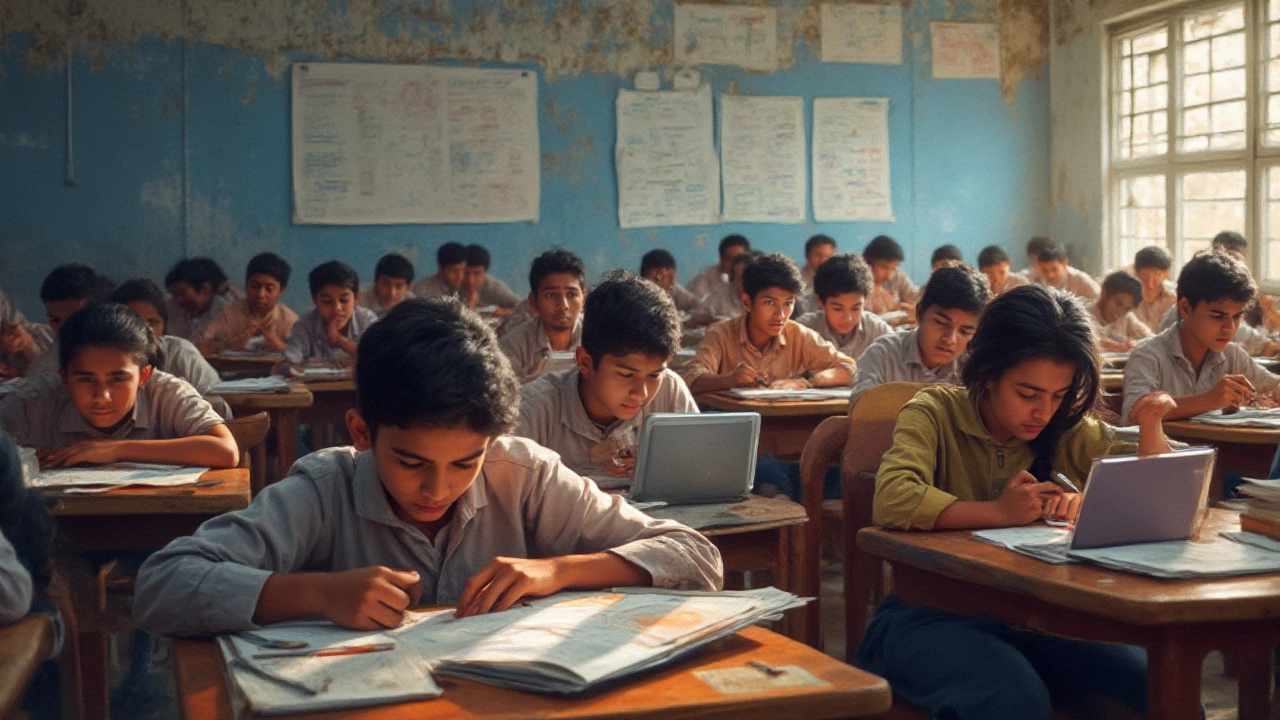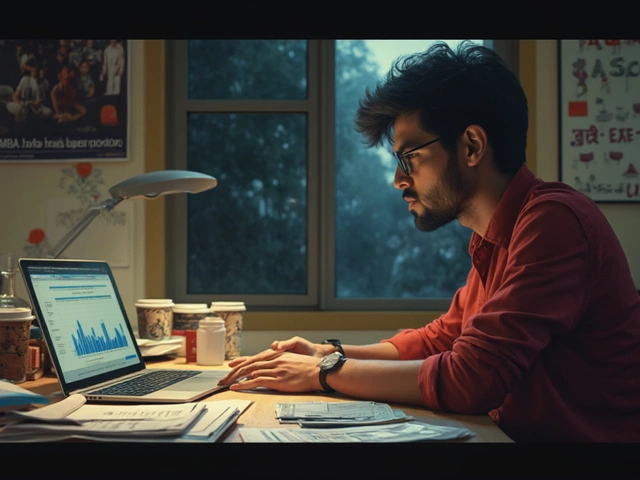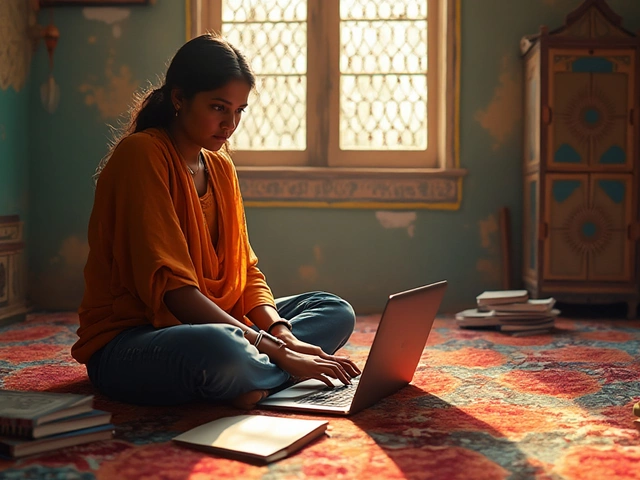Jul
17

- by Dhruv Ainsley
- 0 Comments
Talk about the Indian Institutes of Technology—or just say “IIT” to any Indian parent—and you’ll see a spark in their eyes. For decades, these institutions have set the gold standard for technical education in India. But here’s what isn’t always obvious: just how mind-blowingly tough it is to get in. JEE Advanced, the gateway exam, is not just hard. It’s one of the most brutal competitions anywhere on the planet. Picture this: more than a million students spend years prepping, with only about 17,000 of them making it through the final gate each year. That’s rarer than getting into the Ivy League, rarer than being a professional footballer, and honestly, rarer than some lottery wins.
Cracking the Numbers: How Rare Is Getting Into IIT?
Let’s start by unboxing the numbers, because the odds are enough to make anyone do a double-take. Each May, over 1.4 million students sit for the Joint Entrance Examination (JEE) Main—the first obstacle. Only the top 2.5 lakh scorers are invited to take the JEE Advanced, the real gatekeeper. From there, it narrows down to about 17,000 spots across 23 IITs for undergraduate engineering programs.
Let’s lay this out in a table so you see the competitive squeeze:
| Stage | No. of Candidates | Pass Percentage |
|---|---|---|
| JEE Main Applicants | ~1,400,000 | - |
| Qualified for JEE Advanced | ~250,000 | ~17.9% |
| Seats in IITs (UG) | ~17,000 | ~1.2% of original applicants |
That means only about one in every 82 students who dream of IIT are actually stepping onto campus as a B.Tech fresher. If you look at popular streams like Computer Science in a top IIT, the acceptance rate drops below half a percent. To put that in relatable terms, you have a better chance of running into a celebrity in Melbourne’s CBD than a JEE aspirant landing a CSE seat at IIT Bombay.
The JEE Advanced isn’t just about memorizing formulas; it’s become a test of creativity, stamina, and nerves. Problems are famous for twisting concepts in wild ways—one physics puzzle went viral because most test-takers couldn’t even agree on the question’s meaning. Some questions get debated on social media for months, with toppers breaking them down or IIT professors weighing in.
What really makes the process grueling is how much rides on a single exam day. A sneeze at the wrong moment? That’s a year gone, maybe more. And the pressure? It’s not just academic. Families invest years’ worth of energy, time, and finances. Kota—the coaching capital—draws in tens of thousands each year, with stories of 15-hour study days, fierce competition for the best tutors, and a culture built around the IIT dream.
So, when people ask, “is getting into IIT rare?” they’re really asking, “is it possible at all?” Statistically speaking, getting in is rarer than being admitted to Harvard, Stanford, or Oxford. The legend of IIT isn’t hype—it’s hard, cold math and tough personal stories.

The Human Side: What Sets IITians Apart?
Numbers are just one side. Behind the stats, you’ve got real teenagers fighting battles on multiple fronts: cutthroat competition, pressure from families, the mental grind of continuously chasing uncertain dreams. A lot of people think succeeding in JEE is about being a born genius. That’s a myth. Yes, talent matters, but the difference often comes down to three not-so-obvious things.
- Consistency: Daily, disciplined study wins over last-minute sprints every time. Top rankers often swear by strict routines—solving problems from 5 am to midnight for years, missing parties, birthdays, sometimes even school.
- Resilience: Knockdowns are the norm, not the exception. Mock tests drop marks out of nowhere. Silly mistakes. Family pressures. Burnout. What really sets someone apart is picking up, again and again. There’s this quote floating around Kota circles: “You only fail when you stop trying.”
- Smart Work: Here’s what nobody tells you—trying to study everything is a losing game. Successful candidates learn to spot which topics to double down on, which to skip or skim, and how to play with mock test data to tweak their approach week by week. A 2022 report showed that over 70% of top 100 JEE Advanced rankers used previous years’ papers for practice instead of relying on coaching material alone.
On the motivation side, the IIT brand opens crazy doors. The campus culture—fests, startups, tech clubs—makes people believe anything is possible after years of squeezing themselves for those entrance exams. One IITian even said the exam taught him more about life than engineering. He failed his IIT entrance on the first try, ranked in the top thousand the next year after learning to handle nerves, not just books.
But let’s not sugarcoat it. There’s a darker side too. Kota’s coaching culture has made news for stress, burnout, and even tragedy. The government, in 2023, launched mental health programs and check-ins in top coaching towns. Now, more guardians and students are talking openly about balancing ambition with mental well-being.
Mistakes aren’t the end. A chunk of IITians are repeat takers on their second or third attempt—showing that the path isn’t always a straight shot. Plenty of near-miss JEE students have also built big success stories elsewhere, from top American universities to launching tech startups from their garage. That’s proof enough that while IIT is a ticket, it isn’t the only ride worth taking.

Prepping for Glory: Tips, Realities, and Shifting Trends
So you want to play the IIT lottery (and up your odds a bit)? Rule one: start smart. Kids begin as early as class 8 or 9. But the secret sauce isn’t quantity—it’s quality. In recent years, toppers have been sharing more about how they used technology: online mock tests, AI-driven coaching platforms, remote study groups, and custom revision timetables. During the 2021-22 pandemic years, one in every five top 100 JEE Advanced rankers credited YouTube and Telegram groups for last-mile prep.
- Pace yourself: It’s easy to get swept up in the coaching treadmill. But burning out is worse than falling behind. Recent surveys in Kota showed kids who built time for hobbies or breaks performed just as well, if not better, than those in non-stop “study mode.”
- Pick your resources: There’s no one right book or coaching center. That said, NCERT textbooks are a common baseline—most top scorers swear by them for basics. After that, pick a handful of practice books. Quality beats quantity.
- Don’t ignore mental health: More candidates are now working mindfulness and exercise into their routines. The IIT Council in 2023 even recommended yoga breaks on campus to help freshers adjust to the new pressure cooker environment.
- Don’t chase rumors: There’s a lot of drama every year about paper leaks, pattern changes, or “secret” study tips. Stick to official updates from the NTA and IIT websites.
Here’s another curveball: the competition trend is shifting. As India’s tech scene exploded, private colleges, global partnerships, and online programs have put pressure back on IITs to diversify. Starting in 2023, IITs began expanding new branches, experimenting with online courses, and even letting in foreign students through a separate channel. Yet, every year, the number of applications for JEE Main keeps rising. The dream? Still alive and kicking.
For parents, a warning: don’t let the chase for IIT become bigger than your kid. Yes, IIT opens doors. But so does curiosity, grit, and the drive to keep trying, wherever you land. The bitter truth is cracking IIT is incredibly rare—and that’s what makes the journey, with all its highs and lows, so legendary in Indian education folklore.





